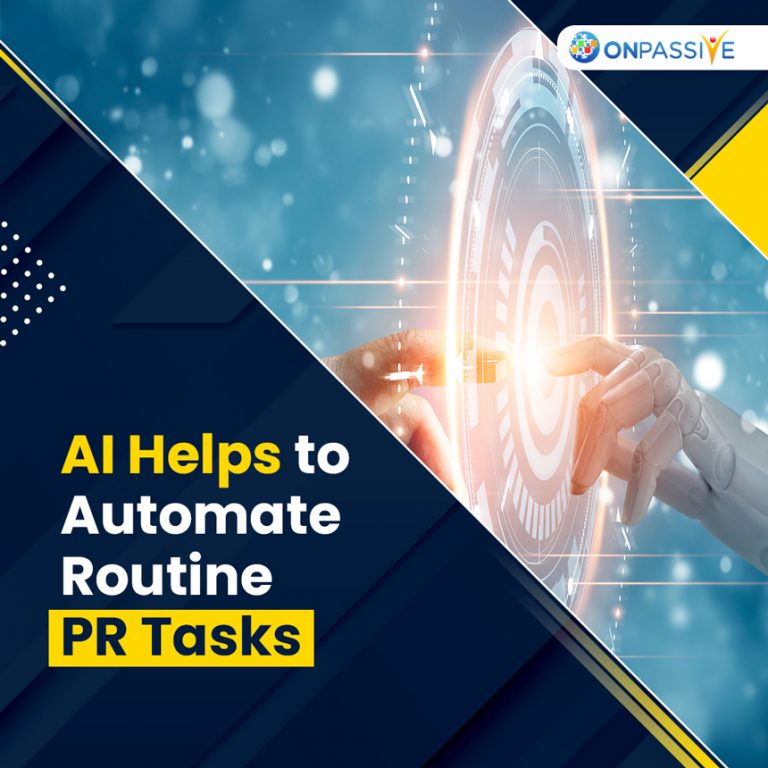
From the beginning, the link between Artificial Intelligence and PR has been shaky. However, it has recently become one of the most hotly debated issues in the PR world. Let’s take a look at artificial intelligence and its influence on public relations, as well as how it may affect your company.
What Is PR?
In the public’s perspective, public relations (PR) refers to several actions carried out by a corporation to promote and defend its image, goods, and policies.
Artificial Intelligence And PR
In terms of public relations, this technology has the ability to:
● Press releases should be distributed
● Make a media library
● Convert audio and video to text
● Media trends can be predicted
● Keep an eye on social media
Certain PR firms are already using artificial intelligence to complete some of these duties. Consider some of the popular PR tools that you are already familiar with. To name a few, Buzzsumo, Hootsuite, and Trendkite employ AI and machine learning to offer you high-quality information that helps you do your job better.
You certainly know how to create an excellent press release, for example. You can probably see how your experience and foresight aid you in crafting an appropriate release for each circumstance. Artificial intelligence will not be able to take your place. It could be able to assist you in more successfully disseminating that release.
Instead of robbing talented PR professionals of their employment, AI has enabled them to execute their jobs better and more efficiently. Ignoring AI would be a disservice to public relations specialists.
Artificial Intelligence Benefits in PR
Let’s take a look at some of the Artificial Intelligence benefits of the PR business.
● Routine Tasks Can Be Automated
Short-straw jobs exist in every field – as in, you must have drawn the short straw to get this position. AI provides some respite. Consider all the duties that a PR professional must complete to keep the agency on track. Calendars must be scheduled, meeting notes must be structured, due dates must be specified, Gantt charts must be created, and follow-ups must be sent out. Because humans now do these activities, we will unavoidably encounter human error: delays, mistakes, and a lot of frustration resulting from this.
On the other hand, human error may be avoided if artificial intelligence is used to automate these processes. PR professionals may enhance their output if they have more time and less stress.
● Provide More Specific Information
Data is collected in various ways by public relations experts, including social media, website traffic, campaign participation, etc. For humans to sort through, make conclusions from, and properly utilise this data, it would take years. AI, on the other hand, can evaluate this data in minutes and give updated information. PR experts may then use the data to adjust their strategy and increase their success rate.
● Determine The True Power Of Influence
Influencers have become an essential component of public relations, with brands relying on people with large social media followings to sway their audiences in their favour. Previously, determining impact was only dependent on numbers. As this area matures, more internal variables like engagement and audience loyalty are used to assess influence. Artificial intelligence can swiftly sift through public data — who is meeting with whom, who is on what committee, and so on — and use this knowledge to calculate a genuine degree of influence. We may expect an improvement in the way influencers are discovered and employed if and when AI is applied in this way.
● Content Choices Have Improved
Artificial intelligence data may assist public relations professionals in hyper-targeting their audience and speaking directly to their desires and requirements. Companies can produce content that genuinely resonates with their audience — and avoid irritating them with worthless material — with the correct data. For example, AI might show public relations professionals that C-suite executives read blog postings on cloud storage solutions. Knowing this, a cloud storage solution provider may write an eBook or white paper that digs further into these solutions and provides a detailed guide that its target market will devour.
Conclusion
Human constraints do not apply to AI. To forecast what brand dangers are on the horizon, a machine may evaluate hundreds of distinct indicators, including some from social listening. This provides public relations experts time to create a strategy for dealing with future crises. Rather than taking our jobs, AI has the potential to improve them. Artificial intelligence and PR have a bright and promising future ahead of them, one which we should embrace rather than dread.


